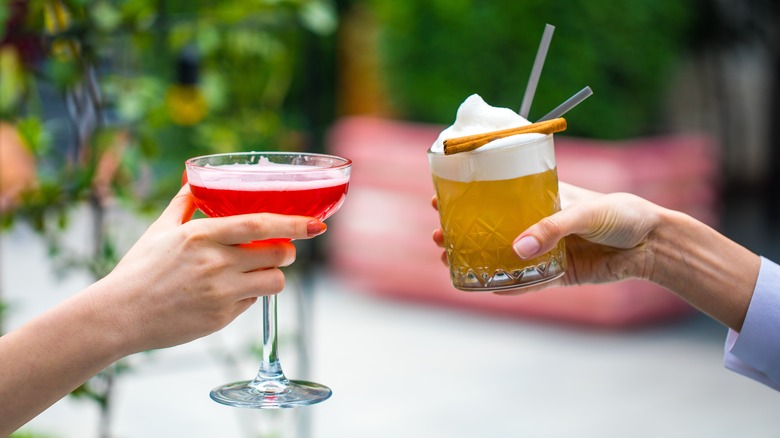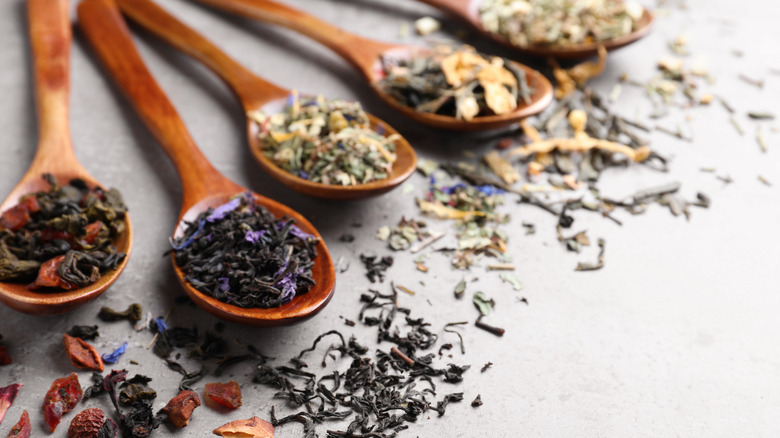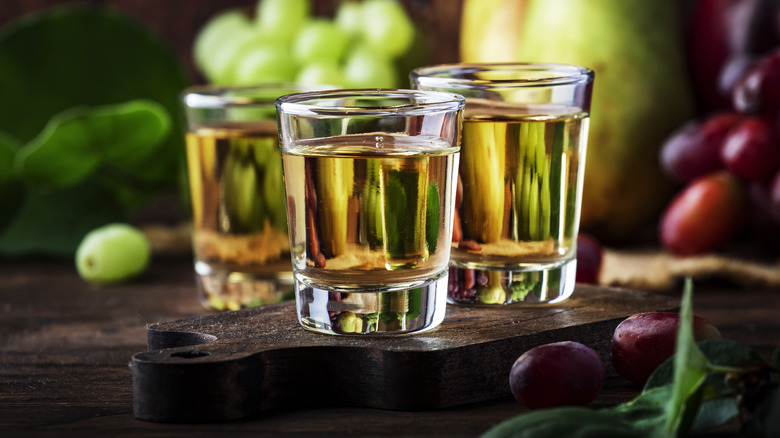The First Ever Cocktail Used An Unexpected Mixer
When you're making a drink today, the most common mixers that you're likely to reach for — for better or worse — are things like club soda, tonic water, coke, or maybe even ginger beer (for the Dark and Stormy enthusiasts.) Back in the 17th century, though, such ingredients were scarce, especially for sailors out at sea who had to deal with rationing. So, sometime in the 1600s, British sailors picked up an idea from the local people in colonial India: the tea punch.
The recipe, found by writer and historian David Wondrich, was very simple. You started off with aged rum (different from dark rum) sweetened with demerara sugar, a type of large-grained brown sugar. A touch of citrus juice — such as lime — was added to provide tartness and a dose of vitamin C to prevent scurvy. Finally, the mixture was topped off with strong black tea to help keep the sailors alert during their shifts. While far from a sophisticated cocktail, it was undoubtedly more palatable than the watered-down alcoholic ration sailors knew as navy grog.
Depending on what was available aboard, people could've swapped the tea for plain water or other mixers as they saw fit. But the basic formula (alcohol, sweetener, citrus, then a mixer) would've remained the same. As one of the earliest mixed drinks around, the tea punch basically set the blueprint for all modern-day cocktails. Who would've thought that tea, of all the mixers, played such a big role in the history of imbibing?
Black tea or green tea for your cocktail?
According to David Wondrich in his book "Punch: The Delights (and Dangers) of the Flowing Bowl," where taste is concerned, green tea was far more popular as a mixer than its robust black counterpart because of its milder, less astringent flavor. Lacking the sharp "bite," the punch that used green tea as a mixer was a lot easier to drink (and required less sugar too.) In contrast, if you were to use black tea, you may have had to use quite a lot of sugar to balance out all the mouth-puckering tannins.
But if you're going to make a punch out of it, it's more than just taste that will decide what kind of tea is best. Black tea has a lot of caffeine. That's why sailors preferred to use it whenever possible to mix their punch, as it would keep them awake. If that sounds awesome enough for you (and you're prepared to be on high alert mode for some time), brew some gunpowder tea or builder's tea and mix it in.
Green tea will make for a good brunch beverage, or it'll hit the spot during your lovely afternoon tea break. For the evening, you may have to use a more modern twist — decaf tea — if you want to stick to your usual sleep schedule. Herbal or flavored teas, while caffeine-free, should be avoided since they'll rob the punch of its flavors.
Use arrack for extra historical accuracy
Because the first punches came off of the ships traveling to and from the East Indies, the ships would've been stocked with arrack as the alcohol of choice (rather than the rum that most people associate with sailors.) Arrack is a broad term for liquors produced in the Indian subcontinent and much of Southeast Asia during that period, made from ingredients ranging from rice to palm sap. However, according to David Wondrich, the Batavia arrack made from sugarcane (known as Indonesian or Jakarta arrack) appeared in the holds of East India Company ships as early as 1613.
If you're going to try and have a sip of history, the good news is that arrack is still being produced today. You should definitely try and swap out the "aged rum" in Wondrich's tea punch recipe with it. Sure, it'll be a bit harder to source than rum, but the effort will definitely be worth it. After all, for a time, sailors were adamant that arrack was superior to Caribbean rums and made for a better punch. But is it truly better? You be the judge! And when you're done with that historic drink, you can try the punch enjoyed Revolutionary-era Philadelphians.


